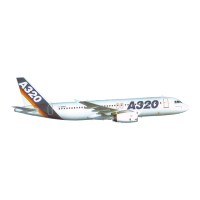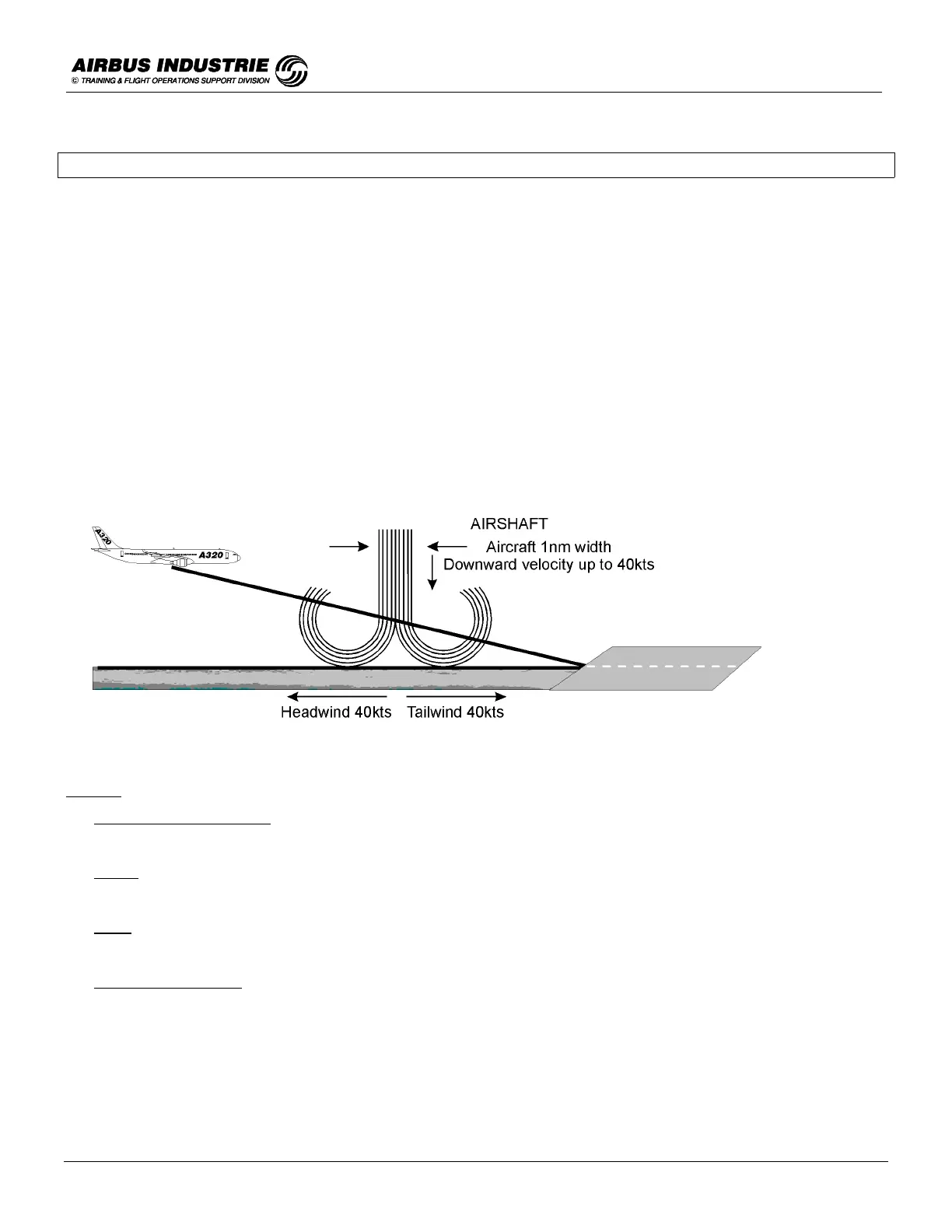A320 INSTRUCTOR SUPPORT
NORMAL OPERATION
DATE: JAN 2001 Page 140 UDY0102
26 - PREDICTIVE AND REACTIVE WINDSHEAR
! General
During take off and landings, windshear and microbursts have been the cause of numerous aircraft accidents.
This type of phenomena is mostly due to cool shaft of air, like a cylinder, between ½ NM to 1,5 NM width that is moving
downward. When the air encounters the ground, it mushrooms in a horizontal direction curling inward at its edges.
The downward airmass velocity in such narrow shafts ranges from 20 kts to 40 kts; when it reaches the ground, the
outflow resulting winds vary from front to back with velocities ranging from 20 kts to 80 kts.
The microbursts affect the aircraft safety for 2 reasons:
1. The aircraft flies in the airmass. When the airmass moves downward so does the aircraft. The aircraft flight path is
thus severely affected.
2. The aircraft lift is related to the relative velocity of the air traveling over the wing. When the wind varies suddenly
from front to back, the lift significantly reduces which causes the aircraft to descend, or to reach very high AOA.
The windshear and microbursts are thus a hazardeous phenomenon for an aircraft at take off and landing. Thus the
strategy adopted to prevent catastrophic consequences is:
1. Increase crew awareness of potential microburst or windshear so as to delay take off or landing.
⇒ PREDICTIVE WINDSHEAR SYSTEM.
2. Inform the crew of unexpected airmass variations.
⇒ FPV sudden drop, Approach Target Speed variations (GS mini).
3. Warn the crew of significant loss of energy.
⇒ Low energy warning (SPEED, SPEED, SPEED), REACTIVE WINDSHEAR SYSTEM.
4. Provide efficient tools to escape out of the shear or get through.
⇒ ALPHA FLOOR (TOGA from ATHR), SRS pitch order (AP, FD) high AOA protection, GS mini.

